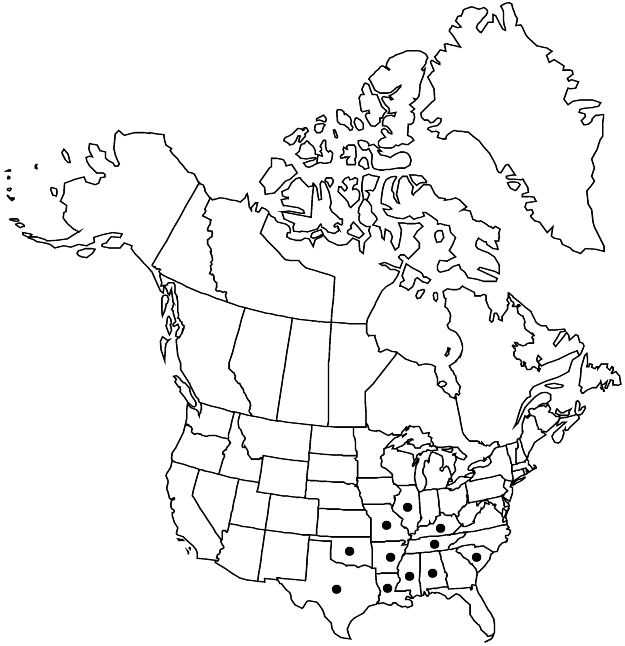Hypericum lobocarpum
Bot. Gaz. 11: 275. 1886.
Shrubs, erect, forming large clumps, 9–15 (–20) dm. Stems: internodes 4-lined at first, soon 2-lined to terete. Leaf-blades narrowly oblong to oblanceolate or linear, 35–50 × 3–11 mm, base articulated, narrowly cuneate to attenuate, margins recurved to revolute, apex apiculate-rounded to subacute, midrib with 12–14 pairs of branches. Inflorescences globose-cylindric to shortly and broadly pyramidal, 5–25-flowered from apical node, with 3–15-flowered dichasia from 1–3 proximal nodes. Flowers 10–15 mm diam.; sepals deciduous, not enclosing capsule, 5, narrowly elliptic to narrowly oblong or oblanceolate-spatulate, subequal to equal, (3.5–) 4–4.5 × 0.8–1.5 (–2) mm, basal veins 3–7; petals 5, golden yellow, obovate-oblanceolate, 6–7 (–8) mm; stamens deciduous, 100–150; ovary (3–) 4–5-merous. Capsules narrowly ovoid-conic to ovoid, 5.5–7 × 2.5–3.5 mm, notably lobed. Seeds not carinate, 1.2–1.5 mm; testa linear-reticulate. 2n = 18.
Phenology: Flowering summer.
Habitat: Rocky stream bottoms and banks, lake margins, swamps and open pine woods
Elevation: 0–500 m
Distribution

Ala., Ark., Ill., Ky., La., Miss., Mo., Okla., S.C., Tenn., Tex.
Discussion
Hypericum lobocarpum usually can be distinguished from H. densiflorum by the five-merous ovary; its lobed capsule is a better differentiating characteristic. Hybrid intermediate forms sometimes occur in northwestern Alabama. The South Carolina population (from Allendale County), although well within the area of H. densiflorum and well established, has fruits typical of H. lobocarpum and appears to be either an outlier or an introduction. Hypericum ×dawsonianum Rehder, apparently H. lobocarpum × prolificum and intermediate in form between the presumed parents, is known in cultivation only.
Selected References
None.
Lower Taxa
"dm" is not declared as a valid unit of measurement for this property.